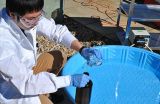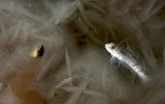(Press-News.org) An intervention for pregnant women that included a computerized, interactive decision-support guide regarding prenatal genetic testing, and no cost for testing, resulted in less prenatal test use and more informed choices, according to a study in the September 24 issue of JAMA.
Since the introduction of amniocentesis, prenatal genetic testing guidelines have focused on identifying women at increased risk of giving birth to an infant with Down syndrome or other chromosomal abnormalities, for whom invasive diagnostic testing should be recommended. Prenatal genetic testing guidelines recommend providing patients with detailed information to allow informed, preference-based screening and diagnostic testing decisions. The effect of implementing these guidelines is not well understood, according to background information in the article.
Miriam Kuppermann, Ph.D., M.P.H., of the University of California, San Francisco, and colleagues randomly assigned 710 pregnant women to receive either a computerized, interactive decision-support guide and access to prenatal testing with no out-of-pocket expense (n = 357) or usual care as per current guidelines (n = 353). The trial was conducted from 2010-2013 at prenatal clinics and practices from throughout the San Francisco Bay area.
The researchers found that significantly fewer women who were assigned to the intervention group underwent invasive diagnostic testing compared with women randomized to the control group (5.9 percent vs 12.3 percent). The overall prenatal testing strategy used by the 2 groups also differed: women randomized to the intervention group were more likely to have no testing (25.6 percent vs 20.4 percent) or screening alone (68.5 percent vs 67.3 percent).
Also, women assigned to the intervention group had significantly higher genetic testing knowledge scores, were more likely to correctly report both the miscarriage risk of amniocentesis and their likelihood of carrying a fetus with the congenital disorder trisomy 21.
"This study's finding that women who were randomized to the intervention group were less likely to undergo testing than those who received usual care adds support to the contention that women may not be receiving adequate counseling about their options. This underscores the need for clinicians to be clear that prenatal testing is not appropriate for everyone, and to present forgoing testing as a reasonable choice," the authors write.
"If validated in additional populations, this approach may result in more informed and preference-based prenatal testing decision making and fewer women undergoing testing."
(doi:10.1001/jama.2014.11479; Available pre-embargo to the media at http://media.jamanetwork.com)
Editor's Note: This study was funded by grants from the National Institutes of Health and the March of Dimes Foundation. Please see the article for additional information, including other authors, author contributions and affiliations, financial disclosures, etc.
There will also be a digital news release available for this study, including the JAMA Report video, embedded and downloadable video, audio files, text, documents, and related links. This content will be available at 3 p.m. CT Tuesday, September 23 at this link.
Editorial: Personalized Genomic Medicine and Prenatal Genetic Testing
In an accompanying editorial, Siobhan M. Dolan, M.D., M.P.H., of the Albert Einstein College of Medicine/Montefiore Medical Center, Bronx, New York, writes that the finding from this study that women with better understanding of the information about various prenatal testing options were less likely to undertake invasive prenatal testing is important, and it contradicts the notion that more information is always desired.
"It is possible that the nature of prenatal testing is different than other health care decisions, but the public may be increasingly aware that the numerous medical advances of the last decade have also created greater complexity in decision making. This finding also suggests that prenatal genetic testing decisions require a complex calculus that considers the timing of the testing, the certainty of the results, and the risks related to undergoing invasive genetic testing during pregnancy."
(doi:10.1001/jama.2014.12205; Available pre-embargo to the media at http://media.jamanetwork.com)
Editor's Note: The author has completed and submitted the ICMJE Form for Disclosure of Potential Conflicts of Interest and none were reported.
INFORMATION: END
Effect of intervention, removal of costs, on prenatal genetic testing
2014-09-23
ELSE PRESS RELEASES FROM THIS DATE:
Lung cancer test less effective in areas where infectious lung disease is more common
2014-09-23
An analysis of 70 studies finds that use of the diagnostic imaging procedure of fludeoxyglucose F18 (FDG)-positron emission tomography (PET) combined with computed tomography (CT) may not reliably distinguish benign disease from lung cancer in populations with endemic (high prevalence) infectious lung disease compared with nonendemic regions, according to a study in the September 24 issue of JAMA.
Depending on the risk for cancer, diagnostic guidelines suggest or recommend FDG combined with PET as a noninvasive test to assess the risk of cancer or benign disease, according ...
Study questions accuracy of lung cancer screens in some geographic regions
2014-09-23
A new analysis of published studies found that FDG-PET technology is less accurate in diagnosing lung cancer versus benign disease in regions where infections like histoplasmosis or tuberculosis are common. Misdiagnosis of lung lesions suspicious for cancer could lead to unnecessary tests and surgeries for patients, with additional potential complications and mortality.
Histoplasmosis and other fungal diseases are linked to fungi that are often concentrated in bird droppings and are found in soils.
The study by investigators at Vanderbilt University and the Tennessee ...
Asteroid named for University of Utah makes public debut
2014-09-23
SALT LAKE CITY, Sept. 23, 2014 – What's rocky, about a mile wide, orbits between Mars and Jupiter and poses no threat to Earth?
An asteroid named "Univofutah" after the University of Utah.
Discovered on Sept. 8, 2008, by longtime Utah astronomy educator Patrick Wiggins, the asteroid also known as 391795 (2008 RV77) this month was renamed Univofutah by the International Astronomical Union's Minor Planet Center in Cambridge, Massachusetts.
"It's neat," Wiggins says. "There aren't too many other universities on the whole planet with asteroids named after them. So that ...
Does size matter? MRI imaging sheds light on athletes most at risk for severe knee injury
2014-09-23
The successful rise and fall of an athlete's moving body relies on an orchestrated response of bones, joints, ligaments and tendons, putting the many angles and intersecting planes – literally the geometry – of a critical part like a knee joint to the test. But it's more than just a footfall error at the root of one of the most devastating of sports injuries: the ACL or anterior cruciate ligament tear. In fact, size – of the femoral notch that sits at the center of the knee joint – and volume of the ACL combine to influence the risk of suffering a noncontact ACL injury. ...
Infant cooing, babbling linked to hearing ability, MU researcher finds
2014-09-23
COLUMBIA, Mo. – Infants' vocalizations throughout the first year follow a set of predictable steps from crying and cooing to forming syllables and first words. However, previous research had not addressed how the amount of vocalizations may differ between hearing and deaf infants. Now, University of Missouri research shows that infant vocalizations are primarily motivated by infants' ability to hear their own babbling. Additionally, infants with profound hearing loss who received cochlear implants to help correct their hearing soon reached the vocalization levels of their ...
Solar energy-driven process could revolutionize oil sands tailings reclamation
2014-09-23
Edmonton—Cleaning up oil sands tailings has just gotten a lot greener thanks to a novel technique developed by University of Alberta civil engineering professors that uses solar energy to accelerate tailings pond reclamation efforts by industry.
Instead of using UV lamps as a light source to treat oil sands process affected water (OSPW) retained in tailings ponds, professors Mohamed Gamal El-Din and James Bolton have found that using the sunlight as a renewable energy source treats the wastewater just as efficiently but at a much lower cost.
"We know it works, so now ...
Antifreeze proteins in Antarctic fish prevent both freezing and melting
2014-09-23
Antarctic fish that manufacture their own "antifreeze" proteins to survive in the icy Southern Ocean also suffer an unfortunate side effect, researchers funded by the National Science Foundation (NSF) report: The protein-bound ice crystals that accumulate inside their bodies resist melting even when temperatures warm.
"We discovered what appears to be an undesirable consequence of the evolution of antifreeze proteins in Antarctic notothenioid fish," said University of Oregon doctoral student Paul Cziko, who led the research with University of Illinois animal biology ...
NYU-Mount Sinai Beth Israel study explores drug users' opinions on genetic testing
2014-09-23
Genomic medicine is rapidly developing, bringing with its advances promises of individualized genetic information to tailor and optimize prevention and treatment interventions. Genetic tests are already guiding treatments of the human immunodeficiency virus (HIV) and hepatitis c virus (HPC), and emerging research is showing genetic variants may be used to screen for an individual's susceptibility to addiction to a substance, and even inform treatments for addiction.
While there appear to be many benefits inherent in the development of this field and related research, ...
Slight alterations in microRNA sequences hold more information than previously thought
2014-09-23
(PHILADELPHIA) – Researchers have encountered variants or isoforms in microRNAs (miRNAs) before, but assumed that these variants were accidental byproducts. A recent study, published in the journal Oncotarget this month, shows that certain so called isomiRs have abundances that depend on geographic subpopulations and gender and that the most prevalent variant of a given miRNA may not be the one typically listed in the public databases.
"This study shows that microRNA isoforms are much more common than we had previously assumed. The fact that some isoforms are shared by ...
Mefloquine fails to replace SP for malaria prevention during pregnancy
2014-09-23
In this issue of PLOS Medicine, Clara Menendez from the Barcelona Institute for Global Health (ISGlobal), Spain, and colleagues report results from two large randomized controlled trials conducted in Africa to test an alternative drug for malaria prevention in HIV-negative and HIV-positive pregnant women.
Pregnant women and their unborn children are at a high risk for complications from malaria infection, and finding new treatment options is important because the malaria parasites are becoming increasingly resistant to the existing WHO-recommended drug sulphadoxine-pyrimethamine ...


